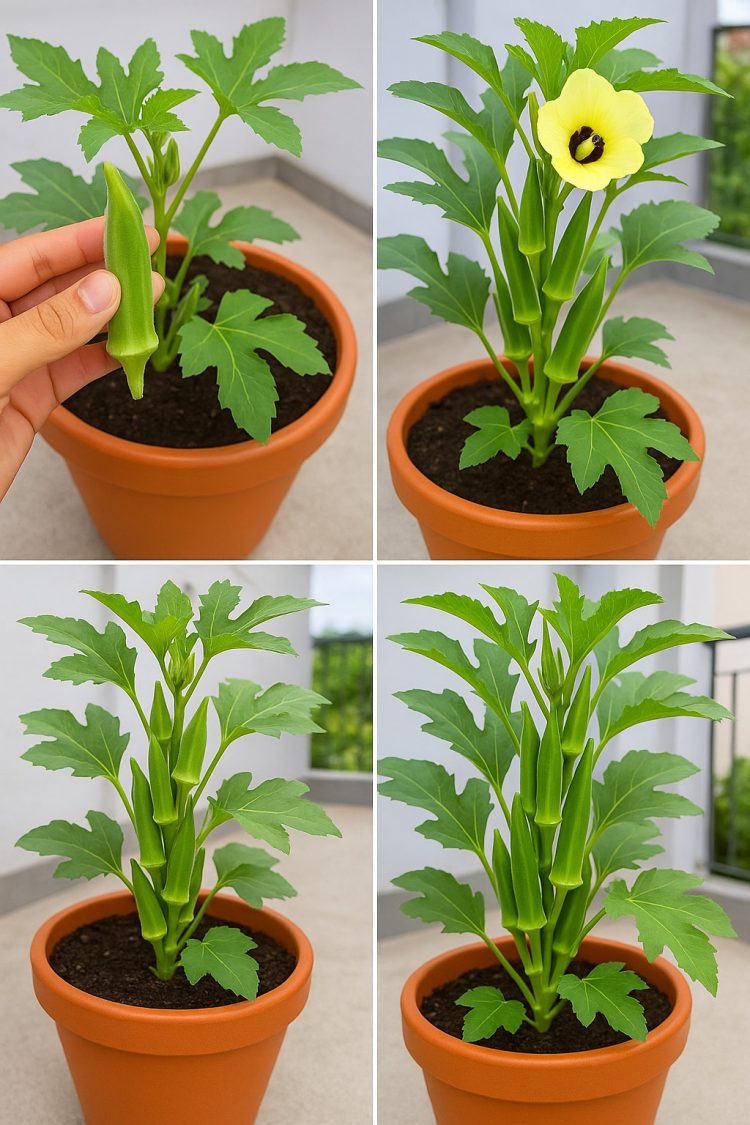ADVERTISEMENT
- Soak the seeds in warm water for 6–12 hours before planting.
- Sow 2 seeds per container, 1 inch deep.
- After sprouting, keep the healthiest seedling and remove the weaker one.
- Best planting season: Spring to mid-summer, when temperatures stay above 20°C (68°F).
5. Ensure Adequate Sunlight Okra needs 6 to 8 hours of direct sunlight every day. Place pots in an area with full exposure to morning and afternoon sun.
6. Watering Tips
- Water regularly but don’t overwater.
- Keep soil moist, not soggy.
- Water early morning or late evening.
7. Fertilize for Growth & Fruit Production
- Apply liquid compost tea or fish emulsion every 10–15 days.
- Use banana peel fertilizer or wood ash for extra potassium during flowering.
- Avoid high-nitrogen fertilizers after plant maturity (promotes too much leaf).

8. Maintain & Prune for Health
- Prune yellow or damaged leaves.
- Pinch the top shoot when plant reaches 2 feet tall for better branching.
- Mulch with dry leaves or straw to retain soil moisture.
9. Protect Against Pests and Disease
- Use neem oil spray (5 ml neem oil + 1 liter water + liquid soap) every 7–10 days.
- Control aphids, whiteflies, and mealybugs naturally.
- Avoid wetting leaves and overcrowding plants to reduce fungal risk.
10. Harvest Often
- Pods are ready when 3–4 inches long and still soft.
- Check and harvest every 2–3 days.
- Use clean scissors to avoid damage to the plant.
Bonus Tip: Mix a teaspoon of Epsom salt in 1 liter of water and spray once every 15 days to boost flowering and pod production due to the magnesium content.
Conclusion: With the right soil, sunlight, and regular care, okra can become one of the most rewarding plants in your terrace garden. Whether you’re a beginner or seasoned gardener, following this method can ensure a bountiful harvest from just a few pots!
Happy gardening! 🌿
